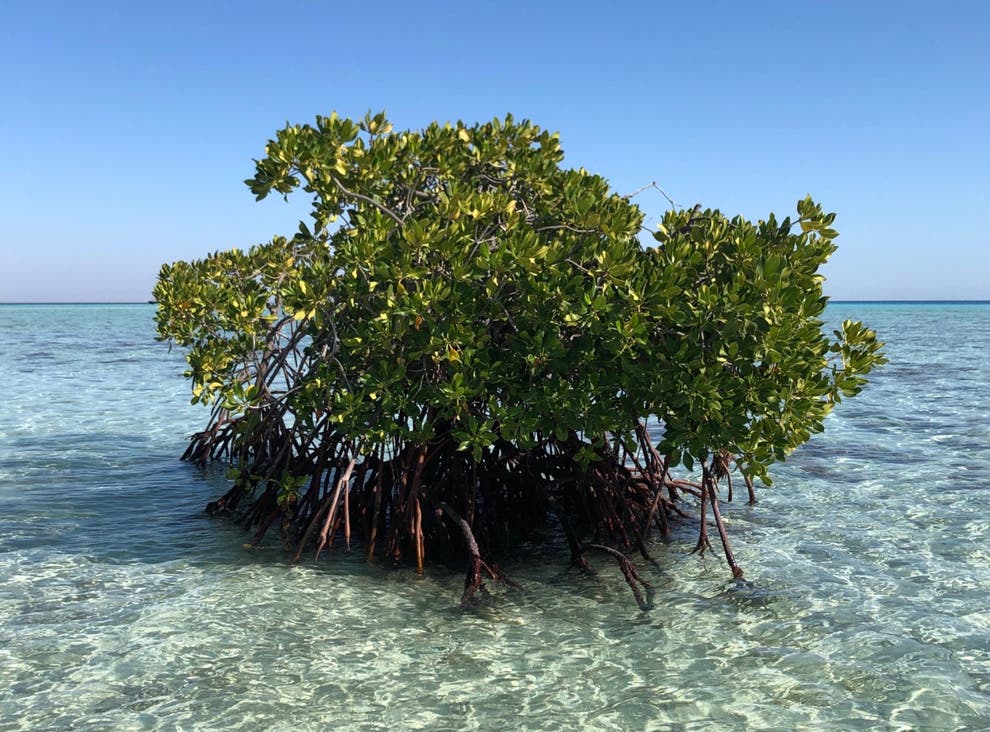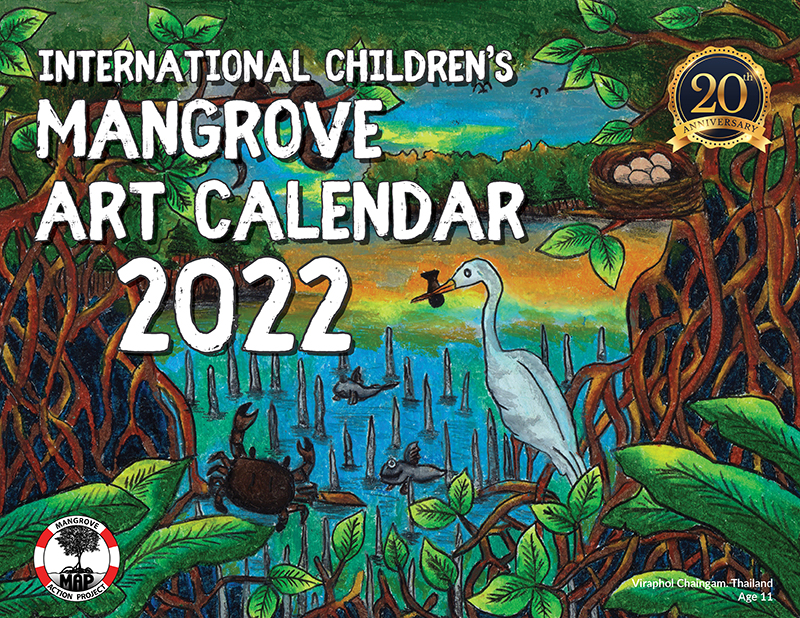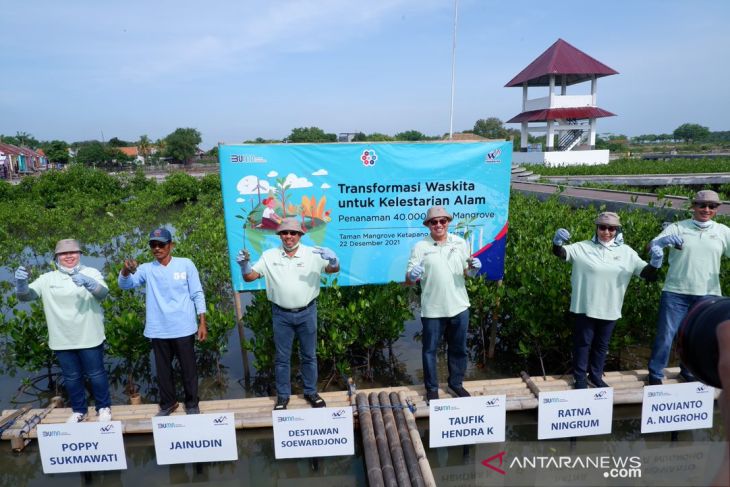MAP Website en Español haga clic aqui FEATURED STORY HELP MAP HELP MANGROVES!

Giving Tuesday was a success for MAP as we were able to surpass the $2,000 matching goal a generous donor provided. We would like to keep the momentum going with a Matching 4 Mangroves campaign for the end of the year. MAP’s Board has challenged us to obtain $5,000 in donations, which they will then match dollar for dollar. We need your generous help in reaching this exciting opportunity! Donate today to help us raise $10,000 for mangroves! Empowering local communities is integral to the success of mangrove restoration projects. In yet another year that limited our ability to be physically present in communities, MAP was able to offer our uniquely formatted training in nature-based mangrove restoration (CBEMR) to people around the world via our online workshops. Even during global shutdowns, the fight against climate change continues. The need to conserve and restore mangroves is even more pressing now than ever before with the growing threats from climate change as pointed out by the recent COP26 conference in Glasgow. In recognition of December as a month for giving, we at MAP would like to meet the challenge made by our Board by enlisting your generous help. We need your help to reach the $5,000 goal for matching funds. With your donation during this matching period, your doubled impact will help us expand our restoration and educational programs. With your help, we can get more communities involved in our process of restoring and preserving the world’s diverse mangrove ecosystems and the important biodiversity mangroves support, while countering the mounting dangers of climate change.MAP has great ambitions in furthering our work across the world and partnering with more NGOs to protect coastal ecosystems and communities at the forefront of the climate change crisis. We need healthy mangrove forests now more than ever. And we need your help to protect and restore these vital habitats. This month of giving, know any amount given to MAP will have a big impact on us and our work in mangrove forests. A heartfelt thank you from all of us as we could not do this work without your support. DONATE NOW!  GLOBAL Magic of mangroves: The plant that sequesters more CO2 than rainforests

GLOBAL One of the first western records of mangroves appeared in the works of Pliny the Elder, the Roman author and naturalist who lived between AD23 and AD79. He had never seen plants that could grow on water, and wrote of his discovery: “on the Red Sea, the trees are of a remarkable nature”. Almost 2,000 years later, scientists are still discovering remarkable things about these plants, like the fact that they can sequester more CO2 than rainforests, says Professor Carlos Duarte, a leading marine ecologist at Saudi Arabia’s King Abdullah University of Science and Technology (Kaust), and they’re barely scratching the surface. Indeed, there is still much we don’t know about mangroves, including precisely how many species of plants there are. Conservative estimates place the figure at around 50, but this can go up to more than 100 depending on who you consult and how the plants are classified. READ MORE There’s a Global Plan to Conserve Nature. Indigenous People Could Lead the Way.

GLOBAL – Dozens of countries are backing an effort that would protect 30 percent of Earth’s land and water. Native people, often among the most effective stewards of nature, have been disregarded, or worse, in the past. With a million species at risk of extinction, dozens of countries are pushing to protect at least 30 percent of the planet’s land and water by 2030. Their goal is to hammer out a global agreement at negotiations to be held in China later this year, designed to keep intact natural areas like old growth forests and wetlands that nurture biodiversity, store carbon and filter water. But many people who have been protecting nature successfully for generations won’t be deciding on the deal: Indigenous communities and others who have kept room for animals, plants and their habitats, not by fencing off nature, but by making a small living from it. The key to their success, research shows, is not extracting too much. READ MORE Carbon sinks: How nature helps fight climate change

GLOBAL – Smoking industrial chimneys, exhaust fumes, fires in the Amazon — yearly carbon emissions recently swelled to 12,000,000,000 tons (12 gigatons).And as carbon increases, so do temperatures. Around half of emissions released remain in the atmosphere. Nature absorbs the rest, holding it in carbon sinks, such as soil, oceans and vegetation. These natural storage solutions slow climate change far more effectively than any human technology — carbon storage factories store just 40 megatons of CO2 annually or 0.003% of anthropogenic emissions. Natural carbon sinks could perform even better with a little tweaking and for a comparatively small price tag. But humans are destroying more and more natural CO2 sinks, damaging our most successful tool to halt a climate catastrophe. As humans rapidly increased their carbon emissions by burning fossil fuels, the amount of CO2 absorbed by plants, soils and oceans also increased. Plants actually benefit from an oversupply because high CO2 concentrations mean they must open their pores only briefly to absorb the gas. This way they lose less water and can better survive droughts. However, scientists say plants and oceans will soon reach their absorption capacity. For instance, by 2050, ocean surfaces will be completely saturated with CO2. Humanity is also now producing more carbon than nature can process, and so the amount of greenhouse gas in the atmosphere is rising rapidly. READ MORE AMERICAS Cayman Winners in MAP’s International Calendar

CAYMAN ISLANDS – Arshiya Anuji (left) and Shrubbhavi Choudhary from Montessori-by-the-Sea-School receive their winners’ Certificates and Mangrove Action Project (MAP) Childrens’ International calendars at the Governor Gore Bird Sanctuary in Grand Cayman. Presenting the awards are Rangers Haileligh Farrington and Brandon Wint Executive Ranger Martin Keeley (centre). Two young Caymanians who took part in the first Cayman Mangrove Festival art show were selected to feature in the 2T022 International Children’s Mangrove Art Calendar organized by the Mangrove Action Project (MAP). Arshiya Anuji and Shrubbhavi Choudhary, both aged 7, from Montessori by the Sea school were selected from entries from all over the world sent to MAP for the 20th anniversary calendar. Their artwork, depicting Cayman’s mangroves and Grand Cayman’s various districts, was chosen for the month of December and is featured alongside student art from 12 other countries ranging from Bangladesh to Russia to Malaysia. READ MORE Still Time to Order Your Children’s Art Calendars 2022

MAP’s International Children’s Art Calendars 2022 are here and ready to order! With beautiful artwork submitted by students from many countries around the world, these calendars both make a great gift, and are a helpful reminder for what we can do to assist in saving our world’s mangroves. All proceeds will go towards furthering MAP’s mission of conserving, restoring, and protecting the world’s invaluable mangrove forests. We wish to thank every child, their teachers and associate non-governmental organizations that participated and collaborated in MAP’s 20th anniversary International Children’s Mangrove Art Contest during 2021. For two decades, MAP’s art contest has been inspiring and creating awareness as well as giving the youths the opportunity to voice and express their point of view on mangrove forests and the problems mangroves face today. We are thrilled to see interest for mangroves continuing to grow among youths, inspiring creative art and learning through participation. Through the art contest, young artists discover the incredible beauty, importance, and biodiversity of mangrove forests, depicting through their art what they have experienced via mangrove field trips, or in the classroom, and home studies. ORDER HERE Researchers crack mangrove puzzle

BRAZIL – Mangrove ecosystems are distributed around the world, along tropical and subtropical coastlines. However, they do not extend beyond certain latitudes, even though the sites seem suitable for them. VUB researcher Ari Ximenes, with researchers from ULB and UCL, has now cracked this question among mangrove bio-geographers, by studying sites off the eastern coast of South America. Ximenes says that their “results show that here, several factors combine to prevent the southward spread of mangrove species. The northward longshore drift that prevails throughout the year is the biggest factor. Another factor is the chilling temperature. The winters are often just a little too cold, and during spring and summer you often have cold water upwelling, which can affect the viability of the propagules.” Mangrove forests are of great ecological and socio-economic importance. They have an important place on the international climate agenda due to their pronounced carbon storage capacity. These tree and shrub species can also be found on the eastern South American coast. But barely 75km south of the southeastern American mangrove border there, where the Araranguá river flows into the Atlantic Ocean, there are no mangrove forests. This is puzzling, because the landscape form of the estuary actually appears suitable for mangroves. READ MORE SCCF completes experimental living shoreline project

USA – Mangrove wetland habitats lining Southwest Florida’s coastlines are highly effective in diminishing wave action and damage from high winds, the Sanibel-Captiva Conservation Foundation reported. They also trap pollutants and provide habitat for sea life, including the endangered smalltooth sawfish. When biologists notice areas of mangrove-covered shorelines disappearing from erosion, it is a cause for serious concern. Nearly 18 months ago, a Dutch marine biologist contacted the SCCF about designing, funding and installing a pilot project on Sanibel to protect mangroves threatened by erosion. Completely funded by the Dutch government, the project will provide an alternative to concrete and riprap, which often lead to additional mangrove loss. The SCCF reported that Netherlands-based BESE Products uses a biodegradable, habitat restoration structure made from the production waste of potato chips and french fries. The waste is collected in the Netherlands and sent to Germany, where it is manufactured into a 3-D lattice that helps deposit sediment and can protect mangrove seedlings along high-energy shorelines, like those on Woodring Road. The goal of the project is to protect the mangroves along Woodring, a stretch of Sanibel’s shoreline that has been gradually disappearing over the past few decades. READ MORE ASIA Waskita plants 40 thousand mangrove seeds along Tangerang’s shoreline

INDONESIA – State-owned construction company PT Waskita Karya (Persero) planted 40 thousand mangrove seeds along the shore of Ketapang Mangrove Park, Tangerang, Banten, as a form of support to environment preservation. “This activity is a form of Corporate Social Responsibility (CSR) program that encourages sustainable development,” Executive Director of Waskita Karya Destiawan Soewardjono noted in a written statement here on Thursday. There are 250 thousand mangroves comprising 16 types, such as the rhizopora and bruguiera, in an area spanning 14.5 hectares. The seed-planting support from Waskita will enrich and support mangrove preservation efforts in that region, he remarked. Soewardjono explained that the company was involved in nurturing the environment, so that it remains preserved and sustainable, as climate changes and carbon emissions had become a global issue. READ MORE OCEANA Mangrove forests are expanding on remote sand cays in the Great Barrier Reef. Why?

AUSTRALIA – OUR SMALL INFLATABLE boat pulls up to the pristine white sands of uninhabited Pipon Island, off the coast of far north Queensland, Dr Jeff Kelleway is first to jump out. Wearing gumboots and a floppy hat, and with a compass hanging around his neck, he is hardly the picture of a typical weekend visitor to the Great Barrier Reef (GBR). Following Jeff, a research fellow in the School of Earth, Atmospheric and Life Sciences at the University of Wollongong (UOW), is Associate Professor Dr Sarah Hamylton, a marine geographer at UOW, and PhD students Zachary Nagel-Tynan and Oxana Repina. They are here to map and investigate the Howick Group National Park (Cape York Peninsula Aboriginal Land), a remote collection of 19 continental islands and sand cays located in the Coral Sea off the coast of Cape Melville, in the northern section of the GBR. With an array of plastic suitcases, tape measures and digging tools strewn across the sand around them, the researchers pore over a series of digital images as they plan their day’s activities.“Isn’t this totally amazing?” Sarah asks as she looks out over the empty, mangrove-lined beach. “There is a real sense of remoteness out on these unspoilt islands.” Sarah is leading this research project, which will see the team collect thousands of aerial images of the islands using an unmanned aerial vehicle, or drone. They will compare their drone images with hand-drawn maps created in 1928 and photographs taken in 1974. The team will also conduct mangrove forest surveys on 10 different islands in the Howick Group. The data will be used to monitor mangrove expansion and other changes to reef environments. It’s critical information for tracking the effects of climate change. READ MORE Like this newsletter?
Pease consider donating to MAP to keep it going.
Giving could never be easier  | ACTION ALERTS BHP: Stop the Greenwash
There is no such thing as ‘green mining’. SIGN OUR PETITION Strengthen 60 Women Farmers in El Salvador
DONATE HERE Stop the East African Pipeline that threatens the planet #STOPEACOP – CLICK HERE Stop construction work on a private port In Defense of the Quilombo Boca Do Rio TAKE ACTION! Tell Sumitomo to stop building polluting coal power in Bangladesh! TAKE ACTION!
Like this newsletter? Pease consider donating to MAP to keep it going. Giving could never be easier 
MAP Website en Español
haga clic aqui
PRINTING EARLY NOV
ORDER YOUR 2022 MAP CHILDREN’S ART CALENDER HERE
TO RECEIVE BEFORE JAN 1
 13 Year old Linda Li “Mangrove Adventure” from Kid Dream Art School

WATCH NOW 
Restoring The Natural Mangrove Forest
Watch movie

Community Based Ecological Mangrove Restoration in Rufiji Delta VIEW VIDEO
Video: Mangroves for the Future
View Here WANT TO GET INVOLVED?
Follow and Join MAP!    
Like this newsletter? Pease consider donating to MAP to keep it going. Giving could never be easier 

Interested in connecting or working with MAP? Check out our opportunities here 
MANGROVE ISSUES Want to learn more about mangroves?
Our short presentation will give you a better understanding of the issues we are working to solve. WATCH PRESENTATION What is CBEMR? Download MAP’s 2 page CBEMR Information Sheet containing links to all MAP’s CBEMR resources – CLICK HERE View MAP’s uploaded Videos at
MAP Video Gallery Question Your Shrimp Consumer/Markets Campaign!
WATCH VIDEO Mangroves: Guidebook to Malaysia – Click Here SHARE MAP’S VISION
CLICK HERE to watch short introductory video. Together we can work “at the roots of the sea”. Our short documentary, Reducing the Risk of Disaster through Nature-Based Solutions : Mangroves 
Marvellous Mangroves Curriculum The Marvellous Mangroves Curriculum begins with a simple philosophy – getting future generations to not only learn about, but understand the importance of mangrove forests. VISIT 
The award-winning Marvellous Mangroves (MM) curriculum educates children on the importance of mangroves and their ecological functions, teaching them about modern challenges and mechanisms for sustainability. VIEW VIDEO Marvellous Mangroves Curriculum in Bangladesh – WATCH VIDEO
MARVELLOUS MANGROVES IN BRAZIL
En Portuges 
Marvellous Mangroves – A Curriculum-Based Teachers Guide.
Like this newsletter? Pease consider donating to MAP to keep it going. Giving could never be easier 
“Question Your Shrimp” Campaign Question Your Shrimp – is it really sustainable? Sign the Petition
Note to Our Readers: We strive to keep active links in our newsletter. However, due to circumstances beyond our control, occasionally links to stories may become broken. If you find a link to a story is not functioning, please cut and paste the headline into your browser search bar. In most cases you should be able to locate the original story.
Not yet a MAP News subscriber?
Click here to subscribe. 
|
























